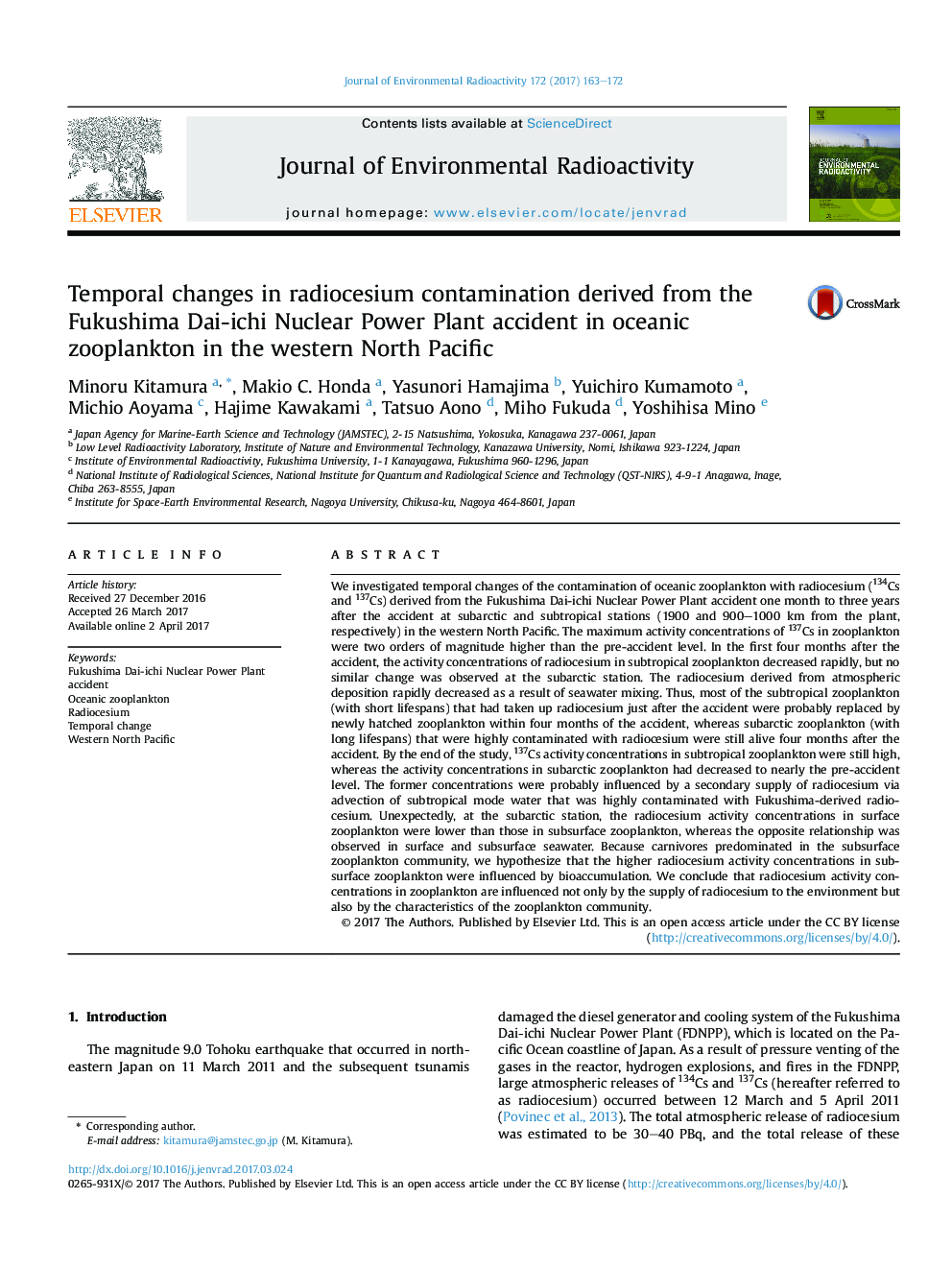| کد مقاله | کد نشریه | سال انتشار | مقاله انگلیسی | نسخه تمام متن |
|---|---|---|---|---|
| 5477541 | 1521567 | 2017 | 10 صفحه PDF | دانلود رایگان |

- Temporal changes in the Fukushima-derived Cs in oceanic zooplankton were researched.
- Cs dynamics were different between subtropical and subarctic zooplankton communities.
- Cs activities in zooplankton were influenced by Cs supply to the environment.
- Characteristics of zooplankton community also affect to Cs activities in zooplankton.
We investigated temporal changes of the contamination of oceanic zooplankton with radiocesium (134Cs and 137Cs) derived from the Fukushima Dai-ichi Nuclear Power Plant accident one month to three years after the accident at subarctic and subtropical stations (1900 and 900-1000Â km from the plant, respectively) in the western North Pacific. The maximum activity concentrations of 137Cs in zooplankton were two orders of magnitude higher than the pre-accident level. In the first four months after the accident, the activity concentrations of radiocesium in subtropical zooplankton decreased rapidly, but no similar change was observed at the subarctic station. The radiocesium derived from atmospheric deposition rapidly decreased as a result of seawater mixing. Thus, most of the subtropical zooplankton (with short lifespans) that had taken up radiocesium just after the accident were probably replaced by newly hatched zooplankton within four months of the accident, whereas subarctic zooplankton (with long lifespans) that were highly contaminated with radiocesium were still alive four months after the accident. By the end of the study, 137Cs activity concentrations in subtropical zooplankton were still high, whereas the activity concentrations in subarctic zooplankton had decreased to nearly the pre-accident level. The former concentrations were probably influenced by a secondary supply of radiocesium via advection of subtropical mode water that was highly contaminated with Fukushima-derived radiocesium. Unexpectedly, at the subarctic station, the radiocesium activity concentrations in surface zooplankton were lower than those in subsurface zooplankton, whereas the opposite relationship was observed in surface and subsurface seawater. Because carnivores predominated in the subsurface zooplankton community, we hypothesize that the higher radiocesium activity concentrations in subsurface zooplankton were influenced by bioaccumulation. We conclude that radiocesium activity concentrations in zooplankton are influenced not only by the supply of radiocesium to the environment but also by the characteristics of the zooplankton community.
Journal: Journal of Environmental Radioactivity - Volume 172, June 2017, Pages 163-172